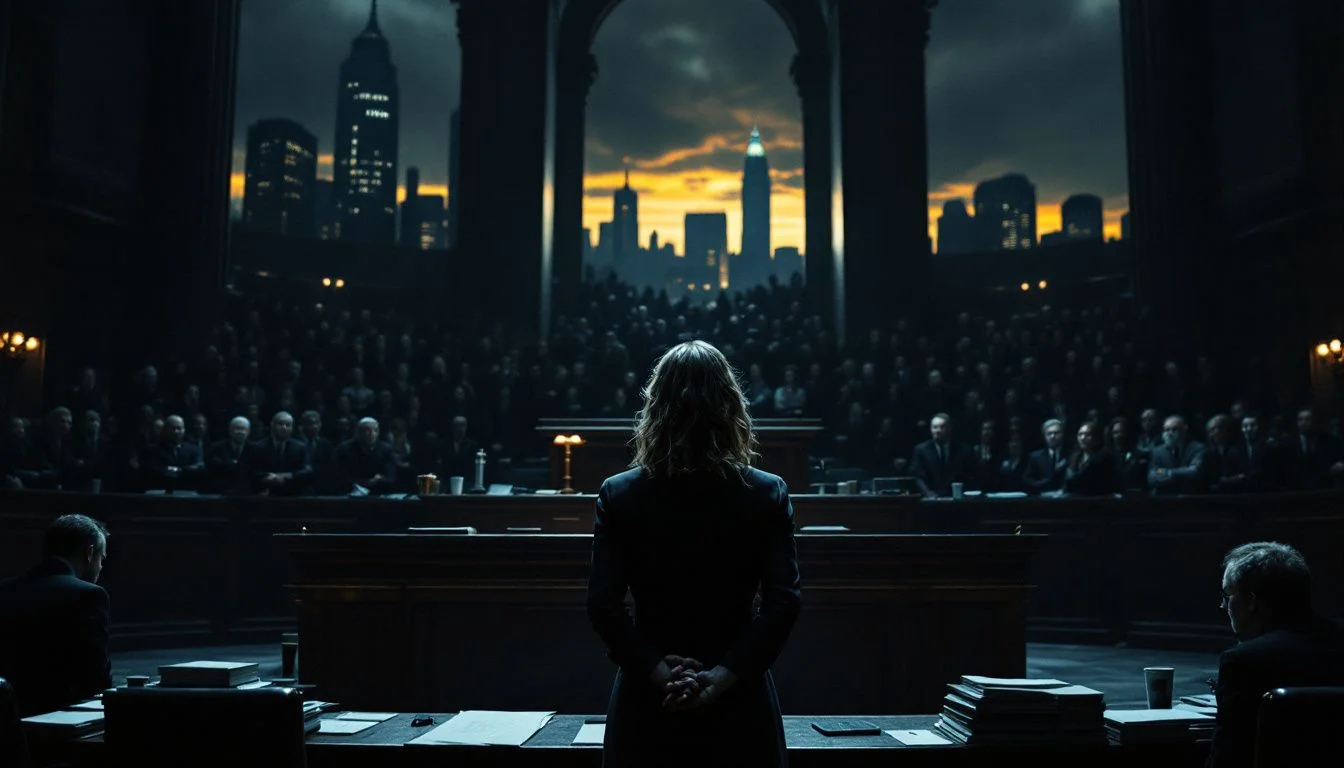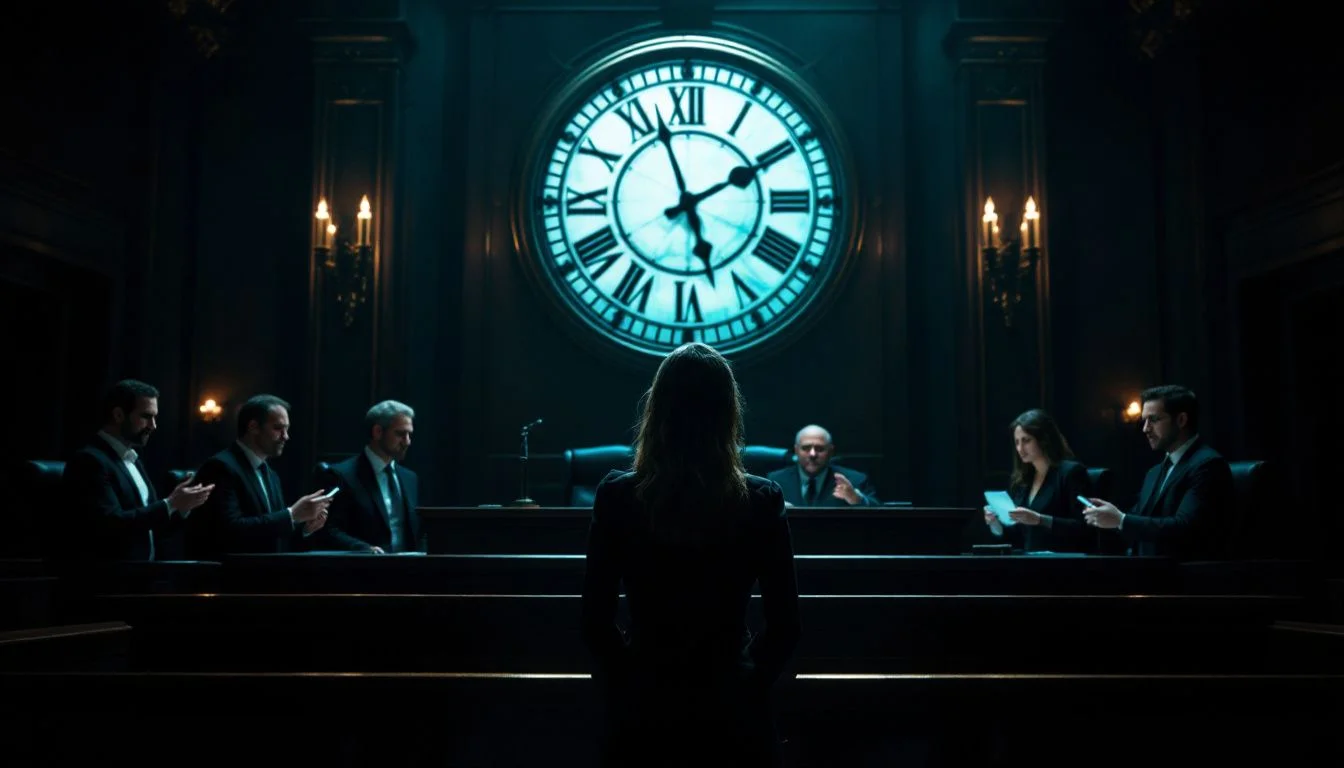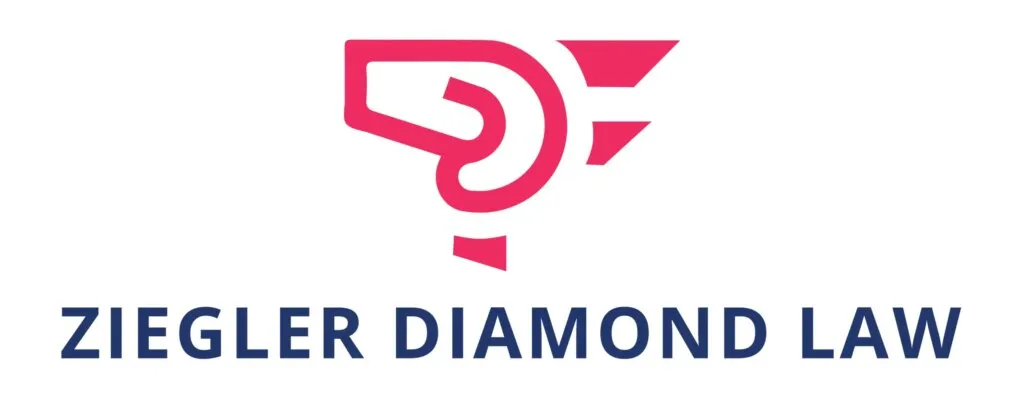Understanding the Suggestion of Bankruptcy Filing: Key Insights
A suggestion of bankruptcy filing is a notice to creditors that an individual or business intends to seek bankruptcy protection. This filing halts ongoing legal actions and starts the bankruptcy process. Here, we’ll break down what this means for you.
Key Takeaways
- A suggestion of bankruptcy filing serves as a formal notice to creditors, halting legal actions against the debtor and marking the beginning of the bankruptcy process.
- The bankruptcy automatic stay provides essential protection to the debtor by restraining creditor actions, but creditors can still seek relief through a Motion for Relief from Stay under certain conditions.
- Post-filing obligations, such as attending the 341 meeting and completing a financial management course, are crucial for ensuring the successful administration of a bankruptcy case.
What is a Suggestion of Bankruptcy Filing?

When a bankruptcy case is filed, it usually creates an “automatic stay,” or a stop of all pending collection activity. The automatic stay occurs automatically and by operation of law, but creditors still need to be make aware of the bankruptcy filing. So often, what happens functionally is that the debtor’s attorney files a “suggestion of bankruptcy” in court cases, which serves as an official declaration to creditors that either an individual or company plans to petition for the protection offered by the bankruptcy court. This formal notification triggers the beginning stages of legal proceedings related to bankruptcy and alerts all stakeholders about the impending actions.
By submitting a suggestion of bankruptcy, there is an immediate stop imposed on current legal action against the debtor. These filings are helpful in notifying both creditors and courts alike, effectively suspending various collections efforts like lawsuits or property foreclosures. This help inform creditors and manage the bankruptcy protections.
Ensuring that every relevant party receives notice through service (inclusive also their respective attorneys) maintains transparency throughout these dealings.
The Role of the Bankruptcy Automatic Stay

The protection afforded by the bankruptcy process includes a powerful feature called the automatic stay. Upon filing for bankruptcy, this automatic stay is instantly activated and serves as a barrier that suspends most legal proceedings directed at you. As a key element of how bankruptcy functions, it puts an end to collection activities by creditors, offering crucial relief to those in debt.
Acting under 11 USC 362 of the Bankruptcy Code, the automatic stay is essentially a restraining order against creditors that prohibits them from contacting you, seizing assets or bringing lawsuits while your case is active within the court system. This safeguard tends to remain effective until resolution of your case unless altered by judicial action. Its influence extends even into foreclosure processes and requires all creditor-initiated litigation against you be put on “pause”.
Once the automatic stay is in effect, creditors are typically required to seek “relief from stay” (which often requires a court order before continuing with legal action. Relief from stay is usually only allowed in collection on secured collateral.
Impact on Legal Proceedings and Lawsuits
When a debtor submits a suggestion of bankruptcy to the court, it puts immediate legal activities on pause in relation to bankruptcy cases and other civil proceedings involving them. This involves postponing or canceling trials and hearings that were set up, giving debtors some breathing space from ongoing lawsuits.
Nevertheless, creditors may often continue their litigation against co-defendants not protected by the bankruptcy filing because these creditors are not obliged to discontinue all associated legal actions upon being informed of one party’s insolvency claim. Understanding how this intricate aspect functions is crucial for maneuvering within the complexities of such financial distress situations.
In many instances involving personal judgments or actions taken in civil courts, there can be significant implications. Most notably is often the stay implemented by a bankruptcy court. Such action ensures that matters pertaining to an individual’s outstanding debts are sorted through an orderly process designated by law, leading to resolutions aligned with managing those obligations more effectively.
Communicating with Creditors After Filing

Once bankruptcy has been filed, it is essential to maintain clear and consistent communication with creditors. You must inform your creditors of the number associated with your bankruptcy case as well as provide them with contact details for your legal representative. This action serves to notify creditors about the ongoing bankruptcy process so they can modify their conduct appropriately.
It’s help to keep a log of all exchanges you have with creditors after filing for bankruptcy. Record specifics such as the identity of each creditor that contacted you, the date on which these communications took place, and what was discussed or conveyed during those interactions. Such thorough documentation may prove crucial in resolving disputes or issues arising from contacts made by a creditor despite knowledge of your recent bankruptcy declaration.
Should any creditor ignore notice about your filing and continue attempts at contacting you regarding debt collection, it becomes necessary to bring this issue before the court system overseeing your case. The automatic stay invoked by initiating a bankruptcy proceeding should shield against this type of harassment. If violated, reporting this defiance enables courts to enforce these protective measures designed specifically for individuals navigating through their declared state of insolvency.
Motion for Relief From Stay Explained
Sometimes, creditors may attempt to resume their legal actions against a debtor by filing a Motion for Relief from Stay in court. By doing so, they are seeking permission to continue pursuing their claims and protect their interests if they suspect that the collateral securing them is in jeopardy or wish to carry out proceedings not halted by the automatic stay.
Normally, the court will only consider a motion for relief from stay with respect to secured collateral. So for example, a mortage company or car lender may seek relief. Motions for Relief are generally not filed or considered by unsecured creditors, like credit cards.
The Importance of Attending Your 341 Meeting
Participation in the creditors’ meeting, or 341 meeting, is a fundamental element of the bankruptcy process. At this assembly, the trustee examines and discusses any modifications required for the debtor’s plan with those present. It serves as an arena where creditors may pose inquiries and allows trustees to authenticate the financial data provided by debtors.
To ensure that your identity can be verified at this crucial 341 meeting, it is important to bring valid forms of identification such as your driver’s license and social security card – but for represented parties, this information is provided by their attorney. To prevent any potential issues should you be unable to attend on schedule, make sure you inform your attorney no less than seven days ahead of time. Failure to appear at a rescheduled appointment could lead to a recommendation from the trustee for case dismissal.
The post-meeting phase requires enrolling in a financial management instructional course—a required step following attendance at the 341 meeting.
Post-Filing Requirements
Upon initiating a bankruptcy filing, it’s imperative to comply with several post-filing obligations to facilitate the progress of your bankruptcy case. The initial step involves submitting all required documentation to the bankruptcy court, which provides critical insights into your fiscal status for effective management of your case.
It is also essential that you complete an approved financial management course following your filing. This educational requirement is designed not only to enhance your budgetary skills, but also as a preventive measure against future monetary challenges. Ignoring these obligatory steps can result in dismissal from the court and thus jeopardize the success of your filing.
Maintaining compliance with any current tax liabilities remains fundamental during the span of your bankruptcy proceedings. Upholding these fiscal responsibilities contributes to preserving both legitimacy within one’s individual bankruptcy context and promotes long-term economic rehabilitation.
How to Handle Domestic Support Obligations
In the context of bankruptcy, domestic support obligations like child support and alimony occupy a unique status. These particular debts are deemed non-dischargeable, which means they remain intact despite a bankruptcy filing. Consequently, these essential financial responsibilities take precedence over other types of unsecured debt.
Following your declaration of bankruptcy, it is still mandatory to honor payments ordered by the court for both child support and alimony. Under Chapter 13 bankruptcy provisions, any arrears in domestic support can be incorporated into a repayment plan extending from three to five years—providing you with an organized approach to settle past due amounts while adhering to legal mandates.
Initiating the process of bankruptcy brings with it certain protections that include pausing wage garnishments meant for such supporting payments. This pause gives one the opportunity to propose alternate terms for repayment. Nevertheless, some creditors involved in recovering child support funds might proceed regardless of the automatic stay provided by your filing. It’s crucially important to understand these intricacies as you navigate through addressing domestic support commitments amid personal insolvency proceedings.
Discharging Debts: What You Need to Know

The primary aim of declaring bankruptcy is to obtain relief from debts. Not all types of debt are easily discharged through bankruptcy. For example, eliminating student loans through bankruptcy requires an additional step: the initiation of an adversary proceeding to demonstrate undue hardship. If there is consensus with the Department of Justice that repaying these loans would cause undue difficulty for a borrower, partial or complete discharge may be recommended.
Various criteria are considered by the bankruptcy court when evaluating claims of undue hardship made by debtors attempting to have their student loan debts forgiven. This includes examining whether a debtor’s basic living expenses can be sustained alongside repayment efforts and looking into other outstanding financial obligations they may have. Should the court find in favor of imposing hardships due to loan repayments, it might issue orders for discharging those specific debts owed. On instances where discharge isn’t granted, borrowers retain the right to challenge this decision or alternatively pursue different avenues like postponement options or payment plans based on income levels.
Occasionally though, even after initiating a bankruptcy filing, some fiscal troubles remain unaddressed. Prompting affected persons towards considering supplementary recourse such as opting for Chapter 13’s extended timeframe aimed at facilitating gradual settlement over time—it underlines why it’s vital in understanding how dissolving one’s monetary liabilities works and investigating every potential route towards reclaiming economic stability.
Seeking Additional Bankruptcy Relief

Should you require assistance after your bankruptcy filing due to significant income changes or unforeseen expenses, it may be imperative to seek additional relief by reopening your bankruptcy case. This subsequent step enables you to petition the court for more aid.
Securing advice from a competent bankruptcy attorney is vital in such scenarios. Experienced bankruptcy lawyers can elucidate available alternatives and assist in maneuvering through the complexity of applying for extra help. Their guidance is indispensable in tackling persistent financial woes and facilitating a clean slate.
Understanding why one might need to take Action after initiating a bankruptcy underscores the necessity of remaining vigilant and well-informed during every phase of the process, as this can prepare one for managing unexpected fiscal obstacles post-filing.
Summary
In outlining the essentials of a bankruptcy case, it is important to comprehend the implications that arise when considering bankruptcy. This includes grasping the concept of suggestion of bankruptcy and recognizing how an automatic stay affects ongoing legal proceedings.
One must also prioritize effective dialogues with creditors, ensure presence at required meetings such as the 341 meeting, and adhere to all stipulations following your filing. Addressing domestic support obligations diligently and becoming familiar with which debts may be absolved are pivotal parts of navigating through bankruptcy.
Post-filing, securing additional relief can underscore the significance of maintaining awareness about your case’s progress and staying ahead in managing affairs post-bankruptcy—key steps for those aiming to reestablish financial order in their lives.
Frequently Asked Questions
What is a suggestion of bankruptcy?
A suggestion of bankruptcy is a legal notice that indicates a debtor’s intention to seek bankruptcy protection, thereby initiating the bankruptcy process and stopping any legal actions from creditors.
How does the automatic stay protect me during bankruptcy?
By initiating an automatic stay, bankruptcy affords substantial safeguarding by halting the majority of legal pursuits aimed at you, including attempts to collect debt and litigation proceedings. This suspension remains in effect until either the resolution of your case or a court-ordered adjustment is made.
Such a provision provides crucial relief, facilitating your ability to rearrange your financial affairs without the continuous stress induced by active debt recovery efforts.
What should I do if a creditor continues to contact me after I’ve filed for bankruptcy?
If a creditor continues to contact you after filing for bankruptcy, provide them with your bankruptcy case number and attorney’s contact information.
Should they persist, report their behavior to the court as it constitutes a violation of the automatic stay protections.
Can domestic support obligations be discharged in bankruptcy?
Domestic support obligations, including child support and alimony, cannot be discharged in bankruptcy and must continue to be paid after filing.
What steps can I take if I need additional relief after filing for bankruptcy?
If you need additional relief after filing for bankruptcy, you can file a motion to reopen your case and consult a bankruptcy lawyer for guidance on your options.
This approach will ensure that you receive the necessary support in addressing your financial needs.


